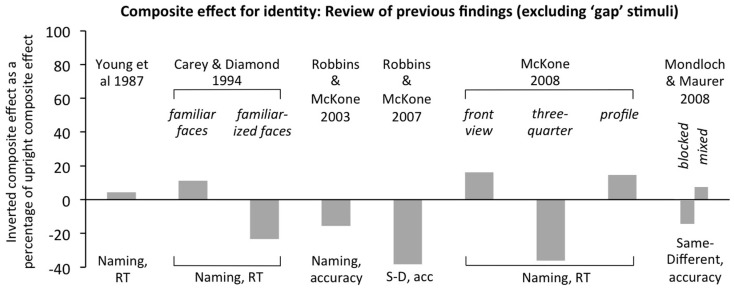Figure 2.
Review of previous findings in composite task (for identity) for inverted faces. Results are plotted as size of the inverted composite effect (RT in aligned condition minus RT in misaligned condition, or reverse subtraction for % correct, using same trials only in same-different versions) as a percentage of the upright composite effect in the same experiment. If the inverted composite effect is as large as the upright composite effect, the score would be +100. If the inverted composite effect is completely absent, the score will be zero (± Statistical measurement error). All results are for Caucasian faces with participants either stated to be Caucasian (Robbins and McKone, 2003, 2007; McKone, 2008; Mondloch and Maurer, 2008) or from populations likely to be majority Caucasian (Young et al., 1987; Carey and Diamond, 1994, data are from the adults). All studies used top-half targets. All studies blocked orientation, except where specified as mixed. All results in the plot are independent: even where different bars come from the same article, each comes from different participants and, in all cases except two (Carey and Diamond, 1994; Mondloch and Maurer, 2008), different face stimuli. SD, acc, same-different, accuracy. Results show: no inverted composite effects were significantly greater than zero where this was tested; and, the average is not average above zero across studies. This lack of inverted holistic coding applies to both the naming and same-different versions of the procedure (which use familiar and unfamiliar faces respectively), and to both accuracy and reaction time (RT) measures.

